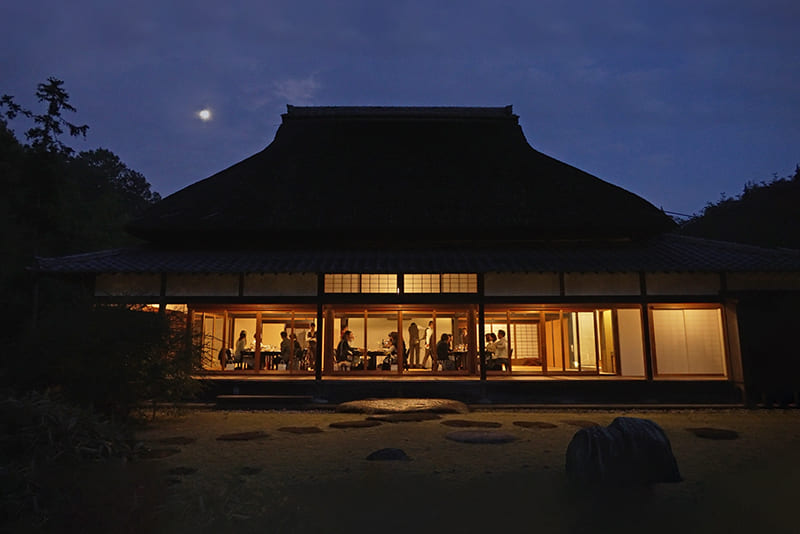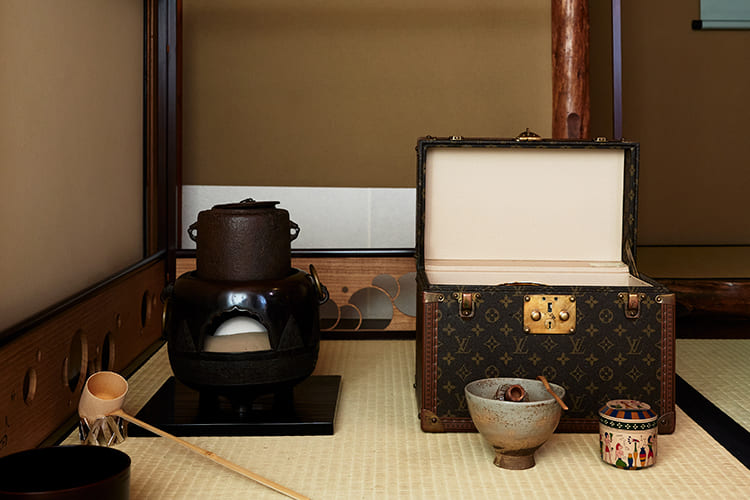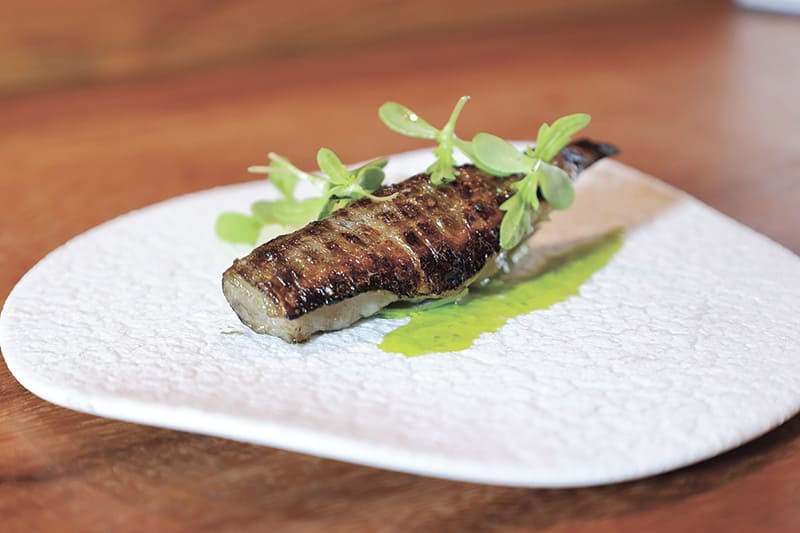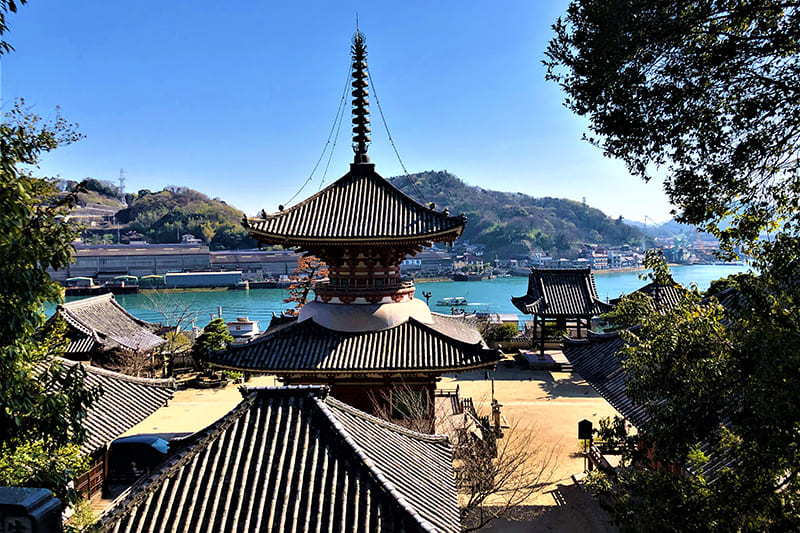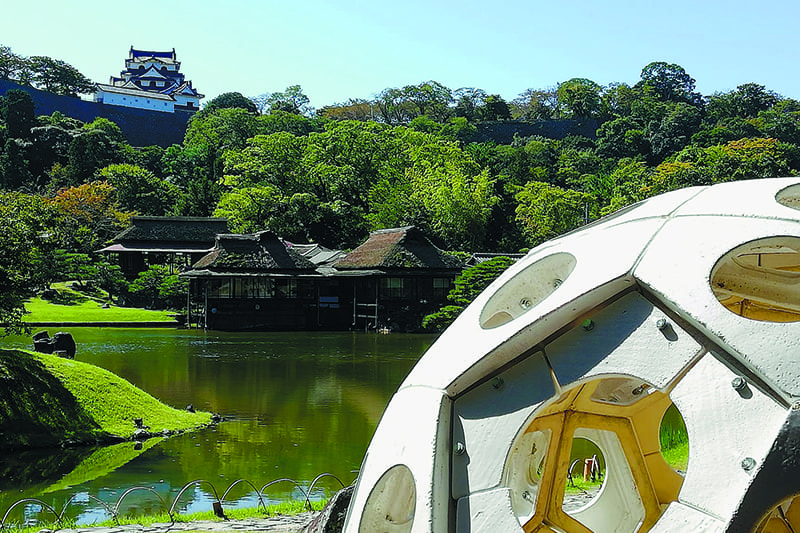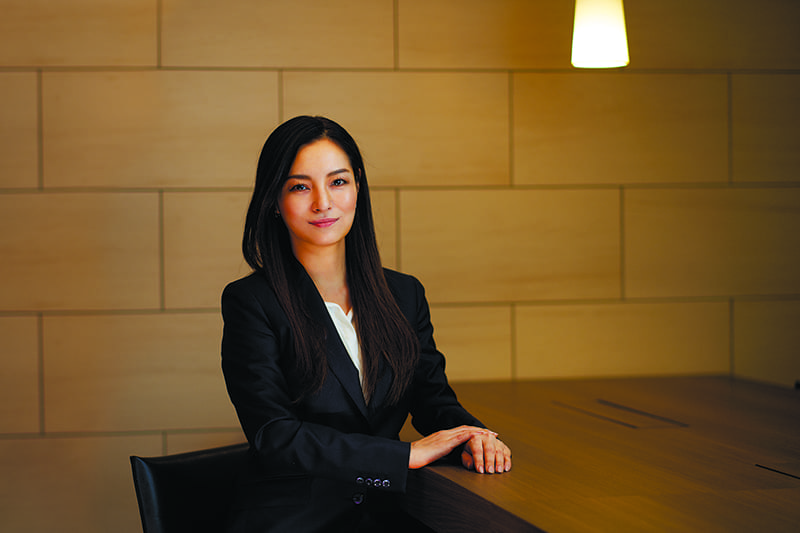December 22, 2023
Where Zen meets food culture: A Setouchi tour
TRANSLATOR:ATSUSHI KODERA
SPONSORED CONTENT
The Hiroshima prefectural cities of Onomichi and Fukuyama boast great scenery of the sea and islands and a long history that has nurtured the rich culture of the Setouchi region around the Seto Inland Sea. This article introduces the Onomichi Komeru Gourmet & Culture Tour, which took me to sites related to mind-filling Zen and introduced me to a shōjin French cuisine that adopts the approach of shōjin ryōri (Japanese Buddhist vegetarian cuisine) blessed with rich nature.
The main destination of the tour, to which I headed while enjoying the beautiful scenery of the Seto Inland Sea after starting from Onomichi, was the Shinshoji Zen Museum and Gardens, a Zen temple situated in the mountains of Fukuyama. Zen has gradually become known widely in Japan and overseas. In this temple, visitors can appreciate Japan’s Zen Buddhism through all five senses, not just experiencing it through, for example, hand-copying of scriptures.
On its grounds, measuring about 231,000 square meters, are facilities including the Shodo temple office, built using large amounts of timber from pine trees from across the Sanyodo region and the coastal areas surrounding the Seto Inland Sea, a re-creation of a tea room designed by Sen no Rikyu and a bathhouse, an essential for a Zen training facility. Japanese-style gardens are arranged as if to connect them. There is a gallery that exhibits paintings and calligraphy by the Zen master Hakuin, who is known for a painting of Bodhidharma with his eyes opened widely. It provides an opportunity to learn about Zen through art.
Jirai, a monk who hails from Germany, gives sermons in English at a Zen training hall built in the late Edo Period (1603-1867). What intrigued me was that, as I listened to his talk while sitting cross-legged, I had a sensation in which the boundaries between time, the environment and the world felt blurred, as if I had slipped into a space where everything was in harmony.
A key symbol of the Zen museum and gardens is the Kohtei art pavilion. It is a boat-like structure supported by huge pillars, with pebbles covering the ground to give the appearance of an ocean. It is a facility that expresses Zen from a modern art perspective. A step inside, an installation artwork of moving waves in the dark awaits the visitor. It provides a time of meditation in which one only looks at waves moving across a water and feels a slight light. The experience allows one to see a world of nothing, which an unknown part of one’s mind has always craved. Once outside, one is quickly returned to the real world, but the calm atmosphere now feels more stimulating than before.
Japan’s inbound tourism significantly recovered in 2023. The Japanese government positions measures to boost consumption by luring foreign tourists as a growth strategy that can contribute to regional revitalization. However, foreign visitors’ destinations have still been concentrated on top destinations, including Tokyo, Kyoto and Osaka, and a weaker yen drives them to shop. Measures are needed to mitigate overtourism and encourage tourists to travel to provincial areas. Although the government has introduced programs to support tourism, there is no denying that local communities remain weak in their ability to communicate messages.
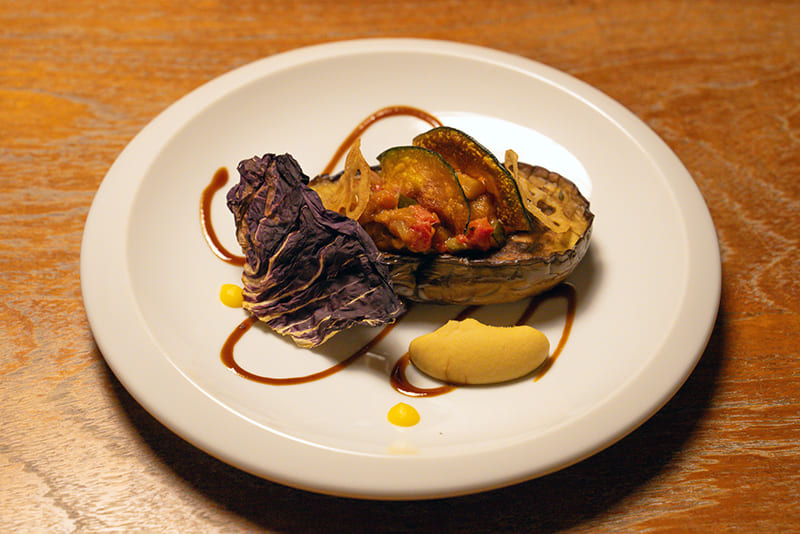
PHOTOS: KOMERU
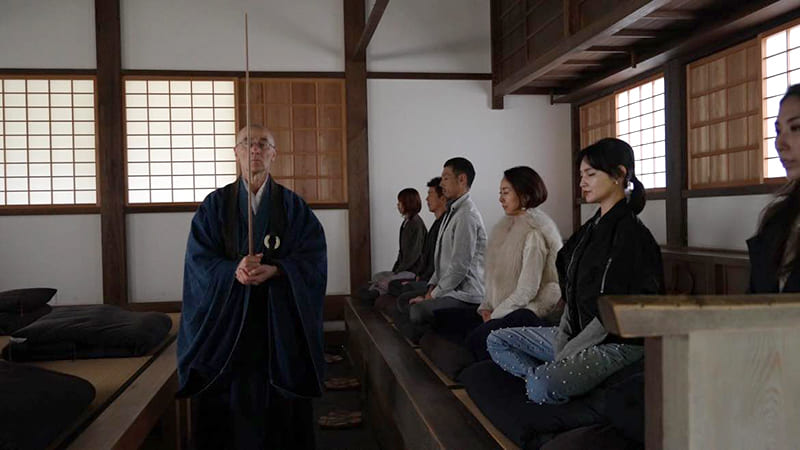
PHOTOS: KOMERU
It was in such circumstances that Atsumi, a serial entrepreneur who travels across Japan to feel nature, eat local cuisine and establish relationships of trust with local business operators, designed the Onomichi Komeru Gourmet & Culture Tour. Serving as the video and photography producer is Megumi, an actress who owns a rice flour pancake cafe in Kanazawa, an Ishikawa Prefecture city along the Sea of Japan coast known as a “smaller Kyoto.”
“There are lots of places in Japan that I want more people to know,” Atsumi said. “I want to revitalize local communities through traditional culture and food.”
Megumi said, “Food culture in Japan, including in regions around the Seto Inland Sea, has attractiveness that I want to show to the world in terms of its aesthetic, like how ingredients are arranged on dishes.”
The climax of the tour they designed is the shōjin French cuisine served at Gankuin, a 350-year-old building on the Shinshoji grounds. Gankuin is usually used as a tea shop but is turned into a French restaurant on tour days. The room has a floor of tatami mats with not a speck of dust on them. From tables covered with graceful white cloths, diners overlook an illuminated garden. The atmosphere was overwhelmingly out of the ordinary, giving the feel of attending a dinner party of nobles.
The menu was designed by Takeshi Kamo, a Japanese chef who was awarded the Order of Agricultural Merit Chevalier from France. His full-course meal, which is based on traditional French cuisine but incorporates the essence of Japanese food culture, was enabled by combining the skills of this top-notch chef with what local farmers can offer, including such ingredients as beets produced in Setouchi and Japanese chestnuts harvested in the best season. It was exactly what I call luxury. An additional feature that made me happy was the attention paid to wide-ranging eating habits. An example was a gluten-free risotto cooked simply with soy milk, Japanese kōji yeast, salt and lemon without using cheese or any other dairy products. A regional French confection, far Breton, is made with Komeru brand rice flour pancake mix, which uses rice specially grown in Kanazawa, and is both healthy and delicious. Drinks selected especially for the course, including wines, sake and a nonalcoholic Japanese tea-based sparkling drink, spice up a one-of-a-kind evening.
But what blew my mind was an eggplant steak. It is served with ratatouille on top, with a chickpea paste with kōji yeast, an akamiso red bean paste and an orange sauce arranged on the plate. Although the course was prepared entirely with vegetables and fruits, the dishes were filling and satisfying. Even better, I could wake up feeling light in mind and body next morning, with a feeling that everything was nicely digested by that time.
“I wanted the guests to savor the taste of mainly the fresh vegetables and fruits, and the rice, the beans, as well as the kōji and miso, which are representative items in Japan’s fermented-food culture,” chef Kamo said.
A Zen teaching says there is an opportunity for awakening in everything one practices daily: drinking a bowl of tea, facing a calligraphy work hung in a tokonoma raised alcove, strolling around a garden, bathing to refresh both mind and body, and regarding food, which supports life, in a new light. The tour gave me a one-and-only experience in which the five senses resonated with each other.
五感が共鳴する日本の禅と食文化の旅。
瀬戸内で日本の「禅」と「精進フレンチ(精進料理の考え方をベースにしたフランス料理)」に出合うツアーが開催された。舞台は、広島県福山市の山間にある禅寺「神勝寺 禅と庭のミュージアム」。
企画したのは、実業家の敦美氏と女優MEGUMI氏だ。敦美氏は「日本には伝えたい場所がたくさんある。伝統文化と食を通じ、ローカルの元気を創りたい」と話す。
座禅や瞑想、アートで禅にふれた旅のクライマックスは、築350年以上の堂宇でいただく精進フレンチだ。一日限りの晩餐会の場に生まれ変わり、目の前にはライトアップされた庭園。ゲストたちは一流シェフと地元の生産者が手を取り合い、新鮮な野菜、果物を中心に米、豆、日本の発酵文化である麹、味噌のエッセンスを取り入れた至高のフレンチに舌鼓を打った。禅の教えでは、日常の実践のすべてに覚醒の契機があるという。五感が共鳴して生み出される唯一無二の時間が、この旅にはあった。
Return to Sustainable Japan Magazine Vol. 31 article list page

